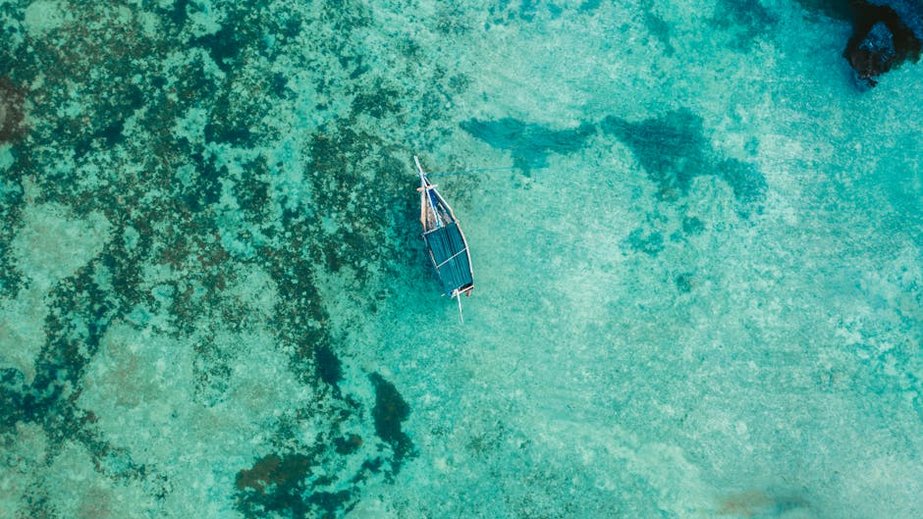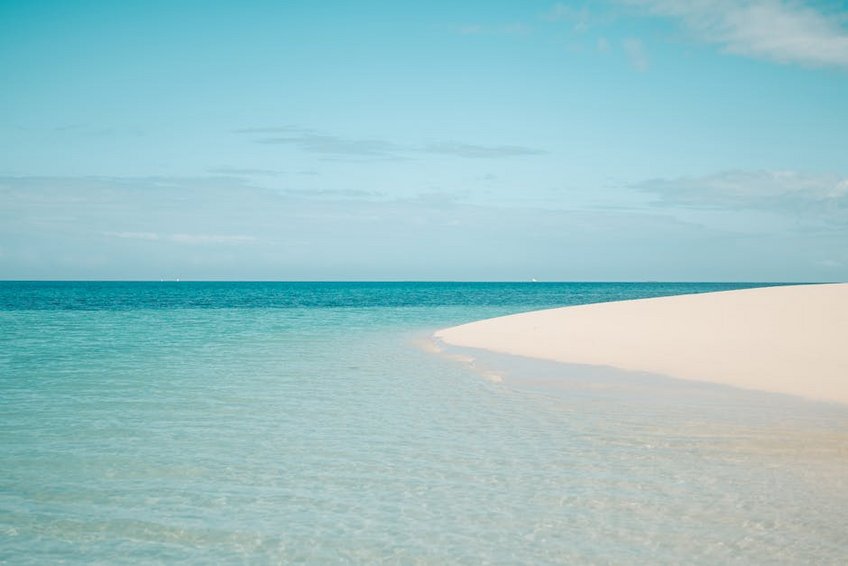Zanzibar Spice Island Discovery: Aromatic Adventures in Paradise
Zanzibar Spice Island Discovery introduces you to an archipelago where fragrant plantations of cloves, cinnamon, and nutmeg define the landscape and culture. This Tanzanian gem combines white-sand beaches with UNESCO World Heritage sites, offering immersive experiences from spice farm tours to historic Stone Town exploration. Our guide provides detailed planning tips, seasonal advice, and cultural insights to maximize your Indian Ocean journey.
Essential Zanzibar Information
Zanzibar comprises several islands, with Unguja and Pemba being the main destinations rich in history and natural beauty. The archipelago’s tropical climate features warm temperatures year-round, typically between 77°F and 88°F (25°C and 31°C), with distinct dry and rainy seasons affecting travel plans. This region has served as a trading hub for centuries, blending African, Arab, Persian, Indian, and European influences into its unique Swahili culture.
The semi-autonomous region operates under Tanzania’s government while maintaining its own cultural identity and tourism infrastructure. You’ll find English widely spoken in tourist areas alongside Swahili, the local language that gives the islands their name from Arabic “Zanj el Barr.” Understanding this cultural mosaic enhances your appreciation for the architecture, cuisine, and daily life you’ll encounter throughout your visit.
What You Need to Know
Before visiting these spice islands, consider these essential facts.
- Zanzibar enjoys visa-free entry for many nationalities, but check requirements as US passport holders need a Tanzanian visa costing $50-$100 valid for both mainland and islands.
- The local currency is Tanzanian Shilling (TZS), though US dollars are widely accepted in tourist areas with current exchange rates around 1 USD to 2,300 TZS for budgeting.
- Health precautions include malaria prophylaxis recommended by CDC and yellow fever vaccination proof if arriving from affected regions, with comprehensive travel insurance strongly advised.
- Budget travel costs $30-$50 daily covering hostel dorms, local eateries serving ugali and fish for $3-$5, public transportation, and self-guided exploration of public beaches and markets.
- Mid-range budgets of $80-$150 daily include comfortable guesthouses or boutique hotels, restaurant meals at $10-$20, occasional taxis, and guided spice tours costing $25-$40 per person with transportation.
- Luxury experiences exceeding $250 daily feature beachfront resorts, fine dining at Rock Restaurant or Emerson Spice, private guides, and activities like sunset dhow cruises at $60-$100 per person.
- Zanzibar Tourism Authority
- UNESCO Stone Town World Heritage Site
Key Historical Details
Zanzibar’s history spans over 20,000 years, with Persian settlers establishing the spice trade that would define the islands’ economy and culture. The Omani Sultanate moved its capital to Stone Town in 1832, cementing Zanzibar’s position as a major trading center for spices, ivory, and unfortunately, slaves. This dark period is memorialized at the Anglican Cathedral, built on the site of the former slave market, offering sobering but important historical context.
Britain established a protectorate in 1890, leading to the abolition of slavery and further development of the spice industry that continues today. The islands gained independence in 1963 before merging with Tanganyika to form Tanzania in 1964, though maintaining considerable autonomy. This complex history manifests in the architecture, cuisine, and cultural practices you’ll experience during your spice tour adventures.
Swahili Cultural Heritage
Zanzibar represents the heart of Swahili culture, where Bantu, Arab, and Persian influences merge into a distinct coastal identity. The Swahili language developed here as a trading lingua franca, incorporating vocabulary from Arabic, Portuguese, and English alongside Bantu grammar structures. You’ll hear this melodic language throughout the islands, particularly in market negotiations and daily greetings that enhance cultural immersion.
Traditional Swahili architecture features ornate wooden doors, cool stone buildings, and verandas designed for ocean breezes in Stone Town’s historic district. Cultural practices include elaborate wedding ceremonies, rhythmic Taarab music, and Islamic traditions observed by most residents. Respecting local customs like modest dress outside beach areas demonstrates cultural sensitivity during your island exploration.

Alt: “zanzibar-spice-farm-guide-demonstrating-vanilla-cinnamon”
Zanzibar Spice Island Discovery – Planning Your Trip
Planning your Zanzibar Spice Island Discovery requires balancing beach relaxation with cultural immersion across this diverse archipelago. The ideal itinerary combines spice farm visits in the central regions with Stone Town exploration and Indian Ocean beach time along the eastern coast. You should allocate 5-7 days minimum to experience the highlights without rushing between destinations and activities.
Budget considerations range from backpacker hostels at $15 nightly to luxury resorts exceeding $500, with mid-range options around $80-$150 providing excellent value. Transportation costs vary significantly between local dalla-dalla minibuses for under $1 and private taxis charging $20-$50 for cross-island trips. Booking spice tours through reputable operators ensures quality experiences with knowledgeable guides explaining the agricultural processes.
Seasonal planning proves crucial with dry seasons from June to October and December to February offering optimal conditions for exploration. The long rains from March to May can disrupt travel plans, while the short rains in November typically involve brief showers that don’t seriously impact activities. Your specific interests in diving, cultural events, or photography should guide your timing decisions for this aromatic adventure.
Best Time to Visit Zanzibar
Visit Zanzibar between June and October for peak dry season conditions with minimal rainfall and comfortable humidity levels. Temperatures range from 75°F to 85°F (24°C to 29°C) during these months, ideal for spice farm tours and beach activities without excessive heat. This period coincides with high season, so booking accommodations 3-4 months in advance secures better rates and availability.
The shoulder months of January-February and November offer good conditions with slightly higher rainfall but fewer crowds and lower prices. January provides excellent diving visibility while February hosts the Sauti za Busara music festival showcasing East African talent. November’s short rains typically involve brief afternoon showers that refresh the air without disrupting travel plans significantly.
Budget Planning and Costs
Your Zanzibar expenses vary based on accommodation style, dining preferences, and activity choices.
Essential Preparation Checklist
Pack lightweight cotton clothing, swimwear, reef-safe sunscreen, mosquito repellent with DEET, and comfortable walking shoes for spice farm terrain. Include a light jacket for cooler evenings and rain protection if visiting during shoulder seasons, plus a power adapter for Tanzania’s Type G British-style plugs operating on 230V voltage. Your documentation should contain passport with six months validity, Tanzanian visa, travel insurance documents, and vaccination records.
Book international flights to Abeid Amani Karume International Airport (ZNZ) 2-3 months in advance for best rates from European hubs like Amsterdam or Middle Eastern connections through Doha or Dubai. Reserve accommodations 1-2 months ahead for high season visits, confirming transfers from the airport to your hotel since taxis aren’t always readily available. Download offline maps and translation apps since internet connectivity can be unreliable outside urban areas.
Top Attractions and Activities
Zanzibar’s diverse attractions span from cultural landmarks in Stone Town to pristine beaches along the eastern coastline. The historic center captivates with its maze-like streets, ancient buildings, and vibrant markets showcasing the islands’ trading heritage. Meanwhile, the spice plantations in central regions like Kizimbani offer hands-on experiences identifying and sampling various aromatic plants that made the islands famous.
Marine activities include snorkeling at Mnemba Atoll’s coral gardens, swimming with dolphins in Kizimkazi, and traditional dhow sailing at sunset. Conservation-focused visits to Jozani Forest introduce you to the endemic red colobus monkeys while supporting local protection efforts. Balancing these experiences ensures a comprehensive understanding of Zanzibar’s natural and cultural treasures beyond the spice trade narrative.
Must-See Highlights
Stone Town’s UNESCO World Heritage site demands at least two days to properly explore its historical landmarks and cultural sites. The House of Wonders showcases Swahili coastal architecture while the Old Fort hosts cultural performances and craft markets in its courtyard. Forodhani Gardens transforms at dusk into a spectacular food market where you can sample Zanzibari pizza and seafood skewers overlooking the ocean.
Spice farm tours in the Kizimbani or Kidichi regions typically cost $25-$40 including transportation and lunch, lasting 3-4 hours with guides explaining cultivation techniques. These working plantations allow you to smell, taste, and learn about vanilla, cloves, pepper, and other spices that defined the islands’ economy. The tours often include tropical fruit tastings and demonstrations of coconut palm climbing techniques.
Nungwi and Kendwa beaches on the northern tip feature spectacular white sands and calm turquoise waters ideal for swimming year-round. Here, you can visit traditional dhow boat building yards, enjoy sunset views, and participate in water sports like kayaking or stand-up paddleboarding. These beaches offer better swimming conditions during low tide compared to the eastern beaches affected by tidal variations.
Hidden Gems and Local Favorites
Chumbe Island Coral Park provides an eco-friendly day trip featuring guided snorkeling through protected coral reefs and forest nature trails. This private island conservation project limits visitors to maintain environmental integrity while offering historical lighthouse tours and environmental education programs. Booking requires advance reservation through their website with day visits costing approximately $60 including lunch and equipment.
The village of Kizimkazi offers authentic cultural interactions beyond the dolphin tours that draw most visitors. Local guides can arrange visits to family homes, traditional Swahili cooking demonstrations, and fishing trips using traditional methods. These experiences typically cost $20-$30 per person and provide income directly to community members while offering deeper cultural understanding.
Jambiani’s seaweed center demonstrates how local women harvest and process seaweed for export, providing economic opportunities in coastal communities. Visitors can learn about this sustainable industry while supporting women’s cooperatives through purchased products or donations. The nearby beach features stunning tidal pools during low tide perfect for exploring marine life without snorkeling gear.
Spice Farm Tour Experiences
Zanzibar’s spice farms operate as living museums where guides demonstrate traditional cultivation methods passed through generations. You’ll learn to identify plants by smell and appearance while understanding their historical significance in global trade routes. Many tours include cooking demonstrations showing how these spices enhance Zanzibari dishes like pilau rice and coconut curries.
The most educational spice tours explain sustainable farming practices and fair trade initiatives supporting local communities. You’ll have opportunities to purchase freshly harvested spices directly from farmers at better prices than tourist shops in Stone Town. These visits typically include tropical fruit tastings seasonally available like jackfruit, breadfruit, and various banana varieties.
Practical Travel Information
Zanzibar’s transportation system combines modern options with traditional methods, requiring some planning for efficient island exploration. Abeid Amani Karume International Airport (ZNZ) receives international flights from Europe, the Middle East, and regional African carriers, with visa processing available upon arrival for eligible passports. Domestic connections link to mainland Tanzania through several daily flights to Dar es Salaam and Arusha for safari combinations.
Accommodation ranges from budget hostels in Stone Town to luxury beach resorts along the northeast coast, with family-run guesthouses offering authentic cultural experiences. Booking platforms like Booking.com and Airbnb list numerous options, though direct booking with smaller properties often secures better rates and personal service. Your location choice should balance beach access with proximity to cultural sites based on your itinerary priorities.
| Accommodation Type | Features and Locations | Price Range (USD/Night) |
|---|---|---|
| Budget Hostels | Dormitory rooms in Stone Town, shared facilities, social atmosphere, walking distance to attractions | $15-$30 |
| Mid-Range Guesthouses | Private rooms with AC, breakfast included, family-run, locations in Stone Town and beach areas | $50-$100 |
| Boutique Hotels | Swahili-style architecture, rooftop restaurants, cultural activities, prime Stone Town locations | $120-$200 |
| Beach Resorts | Oceanfront locations, swimming pools, spa services, water sports facilities, eastern and northern coasts | $200-$500+ |


